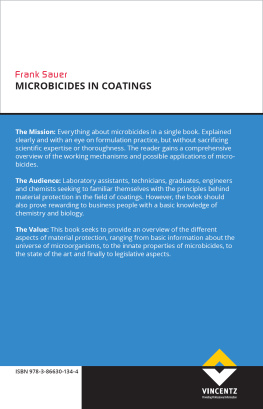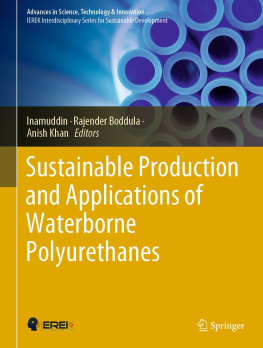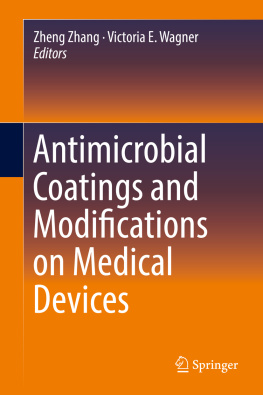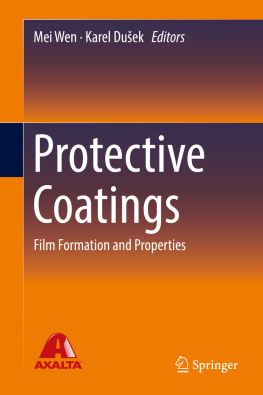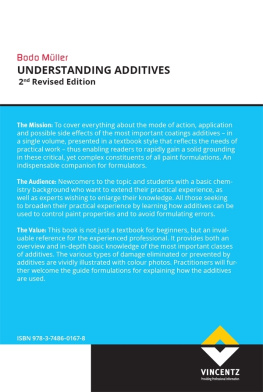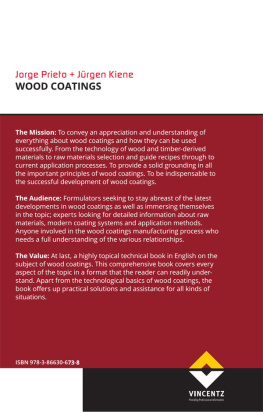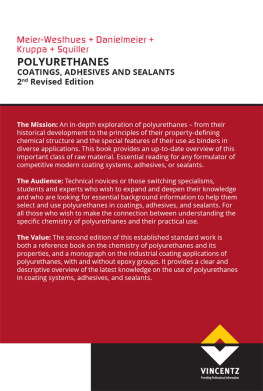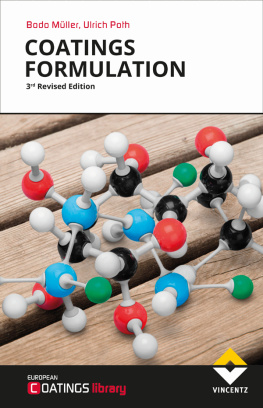Cover: Tiberius Gracchus/fotolia.com
Bibliographische Information der Deutschen Bibliothek
Die Deutsche Bibliothek verzeichnet diese Publikation in der Deutschen Nationalbibliographie; detaillierte bibliographische Daten sind im Internet ber http://dnb.ddb.de abrufbar.
Frank Sauer
Microbicides in Coatings
Hanover: Vincentz Network, 2017
European Coatings Library
ISBN 978-3-86630-134-4
eBook-Herstellung und Auslieferung:
readbox publishing, Dortmund
www.readbox.net
2017 Vincentz Network GmbH & Co. KG, Hanover
Vincentz Network, Plathnerstr. 4c, 30175 Hanover, Germany
T +49 511 9910-033, F +49 511 9910-029,
This work is copyrighted, including the individual contributions and figures. Any usage outside the strict limits of copyright law without the consent of the publisher is prohibited and punishable by law. This especially pertains to reproduction, translation, microfilming and the storage and processing in electronic systems. All the information in this book is provided in good faith and to the best of the authors knowledge but comes without warranty and does not release readers from the obligation of doing their own verification.
Discover further books from European Coatings Library at: www.european-coatings.com/shop
Layout: Vincentz Network, Plathnerstr. 4c, 30175 Hanover, Germany
Preface
Everyone is trying to accomplish something big, not realising that life is made up of little things.
Frank Clark (1860 1936)
Microbicides are substances that represent two sides of the same coin. On one hand, they help to control microorganisms that are responsible for the deterioration of materials and for causing commercial damage worth billions of euros a year. On the other, they are regarded with suspicion because their action can have side-effects on humans or on the environment or both.
Microorganisms have been part of our biosphere for billions of years, during which time they have been extremely successful due to their ability to adapt to the most challenging of conditions. Human life as we know it would not have been possible without the tireless assistance of these tiny organisms. Our intention must therefore not be to combat germs wherever they are encountered microbicidal measures should only be taken in situations where germs cause harm to humans, be it out of medical need or the need to protect a material.
This book seeks to provide an overview of the different aspects of material protection, covering the spectrum from basic information about the universe of microorganisms, to the innate properties of microbicides, to the state of the art and finally to legislative aspects. The biggest challenge in this regard has been deciding which of the key issues to select from the vast wealth of information available, without straying off course. It therefore goes without saying that it has not been possible to cover every detail in depth, as that would have substantially exceeded the scope of the book. Wherever appropriate, references are provided so that the reader can conduct further research.
The book also seeks to familiarise laboratory assistants, technicians, graduates, engineers and chemists with the principles of material protection in the field of coatings. However, it should also prove rewarding to business people with a basic knowledge of chemistry and biology.
I would like to thank all those colleagues who provided information on selected topics and proffered their advice and made various suggestions and recommendations.
My very special thanks go to my wife and my daughter for their endless patience during the preparation of this book and for their forbearance when I was so often unavailable for leisure pursuits, especially at the final stage of writing. Without their support, this book would not have been finalised in time. I am also greatly indebted to them for giving a readers perspective of the book.
Langenfeld, May 2017
Frank Sauer

For Marlis and Melina
Contents
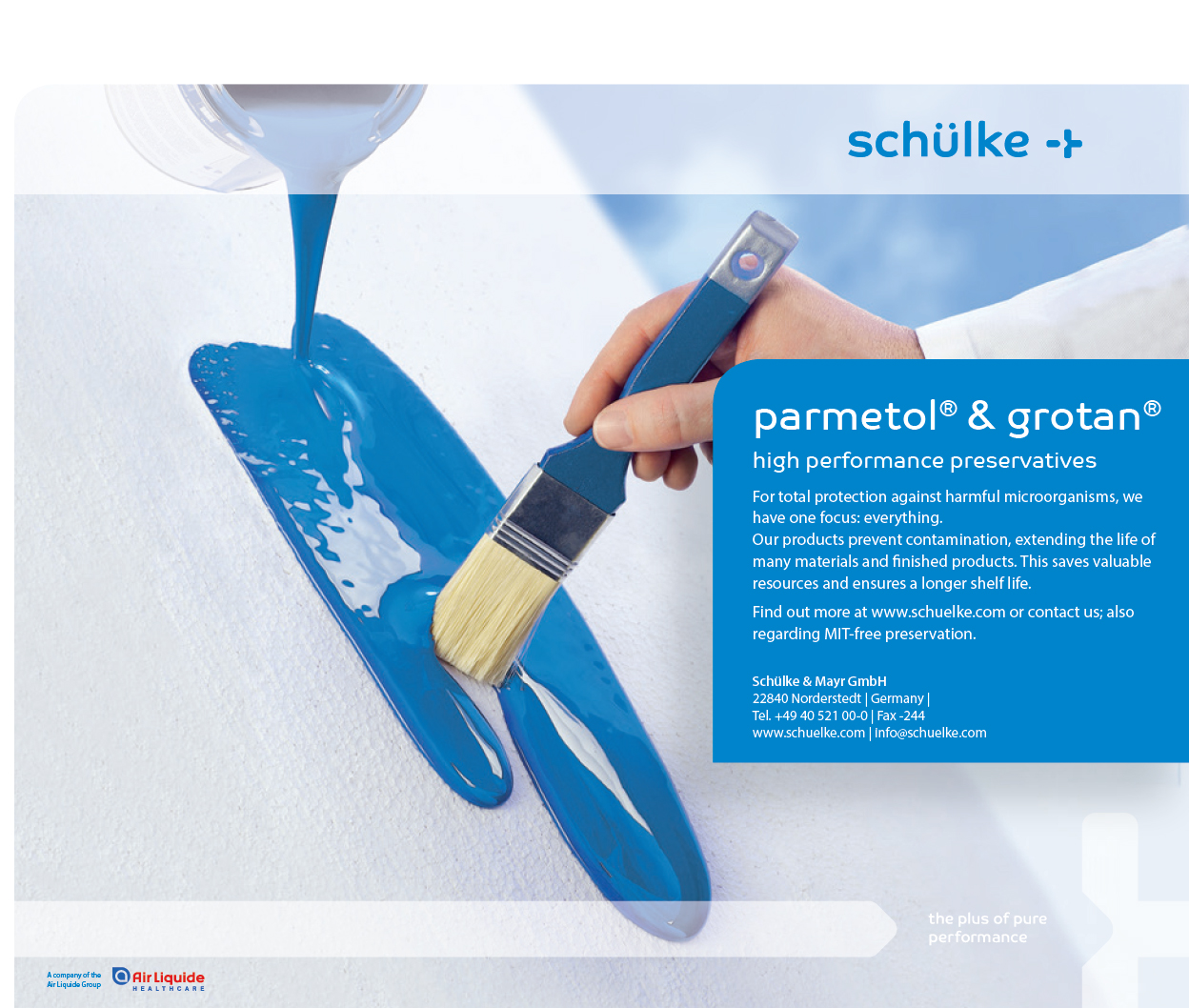
Introduction to microbicides
Surfaces determine our daily lives in manifold ways. They define the borderline between an interior and exterior domain and they are essential for giving form to physical objects. Consequently, surfaces play a key role in our living environment.
Nature creates surfaces in a huge variety of ways, be it in the form of inorganic matter, such as rock, soil, sand, gas, and water, or in the form of organic matter, such as plants and living creatures. At all times, surfaces are subject to interactions, such as approximation, adhesion, transformation, penetration, diffusion, attack and in the worst case destruction.
In general, coatings are designed to build a specific, well-defined layer on top of surfaces. Such layers can confer tremendous functionality: they can have a signalling function (e.g. a traffic sign), a commercial purpose (e.g. an advertising hoarding), an infrastructural purpose (e.g. a pavement), a protective function (e.g. a thermal insulation system also known as ETICS/EIFS) and finally a decorative function by means of which they create an attractive appearance or convey a philosophical message, as in the case of paintings and other artwork.
In the construction field, the protective function of coatings is very often combined with a decorative purpose, e.g. protection of walls against energy loss in conjunction with an external layer for creating an attractive faade that retains its appeal in the long term. The materials used for designing coatings also vary enormously and they are usually used in combination. An architectural paint can be a quite complex mixture of polymeric or pre-polymeric binder, organic/inorganic solid matter, such as pigments, fillers and diverse additives and solvents for keeping the particles in the liquid phase, which, in this specific case, is a prerequisite for applying the coating material by a simple technique, such as brushing, rolling or spraying. But coatings, as a generic term, are not limited to paints and plasters. They can also consist of completely different materials applied by numerous other techniques, such as metal coverings made of gold, copper, brass, chromium, lead, titanium, and platinum (e.g. for roofing churches or producing prostheses as well as implants in medicine), glass panels which are widely used for faades of skyscrapers, ceramic tiles, especially in wet areas, and a huge swathe of plastics to mention just a few (see ).

Figure 1.1: Examples of different kinds of coating materials
Most coatings have one property in common. Sooner or later, they become susceptible to attack and destruction. This might come about as a result of natural climatic conditions or other environmental factors, man-made physical and/or chemical impact, or seemingly unremarkable species which are minute and work under-cover but which have been extremely successful and effective for billions of years: microorganisms.
Bacteria, yeasts, fungi, algae and lichens are remarkably adaptive to different environmental situations and can find their specific ecological niche even in the most inhospitable of conditions. Even materials such as concrete, plastics and the like which were long thought to withstand microbial degradation are not exempt from such attack (.
Even more diverse than the world of coating materials is the huge variety of microbial species found in nature. All these germs have a specific preference for certain living conditions, such as acidic/alkaline media, aerobic/anaerobic surroundings or shade/sunlight areas.
Next page
